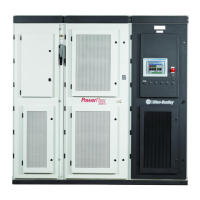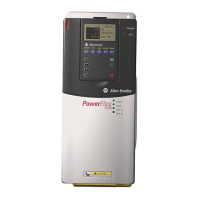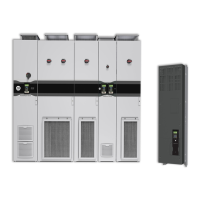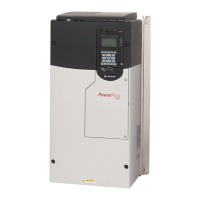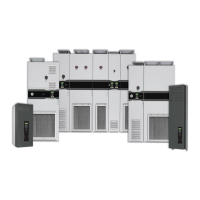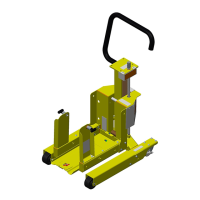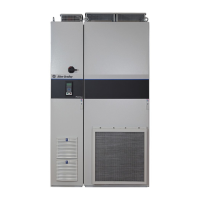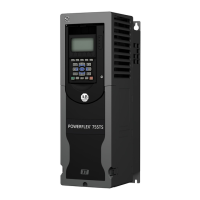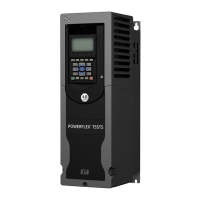1-18 Functional Description
7000-TD002A-EN-P – September 2007
For Class 1 faults (with the exception of dc link overcurrent,
rectifier overvoltage and inverter overvoltage), the line converter is
immediately phased back to retard limit until the dc link current
drops to zero. The gating for both converters is disabled and the
contactors (if installed) are opened. At this point the motor will coast
and its speed will depend on the characteristics of the load. For some
high inertia loads, the motor may coast for a long time.
The dc link overcurrent, rectifier input overvoltage and inverter
output voltage are special cases in that the fault detection is
performed by hardware because a very fast response is required. The
hardware fault detection responds to instantaneous values. Also the
drive response to these faults is different from other Class1 faults
because it freezes the SGCT gating (both converters if a PWM
rectifier based drive and only the inverter side if a 6P/18P SCR
drive) until the dc link current has dropped to zero. The gating is
then disabled and contactors are opened.
For Class 2 faults the motor is brought to a normal stop before the
gating is disabled and the contactors opened. Typical examples of
Class 2 faults are motor overload, drive overload and loss of load.
For most Warnings no action is taken and drive maintains its normal
operation. A warning could be an indication of a problem in drive
e.g. an Air Filter warning is an indication of a blocked air filter. In
addition there are a few warnings in the drive that may cause
momentary interruption in the operation of the drive e.g. Master UV,
Line Loss or Bus Transient. The action taken is similar to a Class1
fault and the normal operation is resumed once the transient
condition has disappeared. If a drive experiences Master UV or Line
Loss, then Auto Restart Dly (3) should be set to a non-zero value in
order to resume normal operation automatically.
It is important to understand how contactors (input and output)
behave in an event of fault. If the input contactor is set for Not
Running or All Faults via parameter Input CtCtr Cfg (1), then the
contactor opens on any fault (Class 1, Critical or Class 2) in the
drive. This happens after the dc link current has been brought to zero
and the gating for all converters disabled. If the contactor is set for
Critical Flt, then the contactor will open only when a critical fault
(explained above) happens in the drive. For all other faults (Class1
or Class2) the input contactor will remain closed after the drive has
been shut off. For a complete list of fault classification, refer to
Chapter 3 – Troubleshooting.
An output contactor, whose configuration is specified by Output
Ctctr Cfg (5), opens for any fault in the drive. This happens after the
dc link current has been brought to zero and the gating for all
converters disabled.
Drive/Motor Protection
(cont.)
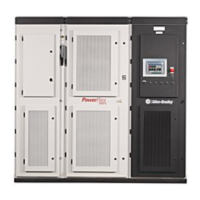
